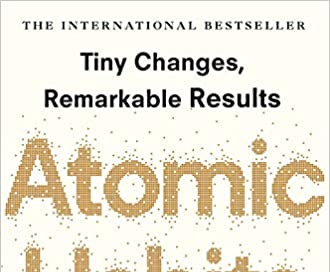The 2nd Law of Behavior Change
Follow-up to last week. First part contains mostly quotes/advice from the book with some limited commentary. Second part contains some reflection and updates on progress.
If you want to increase the odds that a behaviour will occur, then you need to make it attractive
It is the anticipation of a reward—not the fulfillment of it—that gets us to take action. The greater the anticipation, the greater the dopamine spike.
I hadn’t made this connection before. The anticipation is where it’s at… I suppose this works the same with procrastination. Anticipation of the tough/boring work is what causes the lack of motivation, not the work itself.
So how do we make necessary habits/actions more attractive?
Combine habit stacking (from last week) + temptation bundling:
Link an action you want to do with an action you need to do.
After [CURRENT HABIT], I will [HABIT I NEED]. After [HABIT I NEED], I will [HABIT I WANT].
Example: If you want to check Facebook, but you need to exercise more:
After I pull out my phone, I will do ten burpees (need).
After I do ten burpees, I will check Facebook (want)
The trick with this is sticking with the bundle. My last attemot at habits and task tracking went pretty well until I hit a wall. Then I had trouble getting up over the wall and back on track. (More on that below).
Culture
Join a culture where (1) your desired behaviour is the normal behaviour and (2) you already have something in common with the group.
The culture we live in determines which behaviours are attractive to us. The normal behaviour of the tribe often overpowers the desired behaviour of the individual.
“We tend to imitate the habits of three social groups: the close (family and friends), the many (the tribe), and the powerful (those with status and prestige).
Framing
Reframe your habits to highlight their benefits rather than their drawbacks Case: Exercise
NOT: I need to go run in the morning.
DO: It’s time to build endurance and get fast.
Your habits are modern-day solutions to ancient problems.
Find love and reproduce = using Tinder
Connect and bond with others = browsing Facebook
Win social acceptance and approval = posting on Instagram
Reduce uncertainty = searching on Google
Achieve status and prestige = playing video games
FACT Your current habits are not necessarily the best way to solve the problems you face; they are just the methods you learned to use.
I was getting down on myself about this latest flubbing of habits/tasks. But then I realized something about myself. I have always been a natural sprinter. When I was a kid I was typically the fastest (or among the fastest) on my baseball/football teams. Stamina, on the other hand, has been something I’ve had to work at.
SO I wonder if rather than fight it and try to make myself the perfect slow and steady type… Maybe I can work with my natural style and do a sprint/rest model for productivity?
Or I wonder if it’s just me trying to justify dropping the routine. I was jamming pretty good there for a couple months and just couldn’t get back on track.
I think a big part of that is what James Clear talks about in Atomic Habits. There were too many barriers in the way. The barriers didn’t matter when I was flowing, but once the flow became obstructed I had trouble with motivation. Plus my habits were a little too open ended. As much as I love keeping things from being dull, sometimes I just gotta set concrete limits.
For this latest round of habits/routines I’m going to keep thigs simple. Reading The 7 Habits of Highly Effective People was a revelatioin last year. It helped with my mindset quite a bit, but I found the weekly schedule too daunting a task to attempt.
Atomic Habits presents a simpler model. Perhaps because it focuses specifically on behaviior change with habits, whereas The 7 Habits was more of a lifestyle book.
I’m still working on the identity part of the equation from last week. Rather than ask “who do I want to be” and trying to emulate that person, I’m asking myself, “what life do I want to live?” For instance, what does the perfect “day-in-the-life” of Jack look like?
So… While I work on figuring that out, I’ve got a simple habit that will keep me progressing. Plus, it fits into my sprint model.
I’m sending out handwritten note cards to homeowners in Mount Horeb and Columbus, Wisconsin. Why those two towns? Because MoHo is where I live, and Columbus is where one of my partners lives. Plus, being a bit outside of Madison will help with competition.
I made 18 total cards yesterday and have set the goal of a minimum of 6 cards/day for the month of June. I’ve hung this chart up at my desk so that I have to look at it while working. If I haven’t hit my quota then I better get on it.
I may do more than 6 in a day (like yesterday) but feel this is a good number to aim for. Mainly because it allows me to get 1 of each type sent. I’ve got 2 towns and 3 different colors that I’m writing in (black, red, and blue) so that I can test and see if one has better response rates.
We’ll see how this month goes and adjust next month.
Not sure exactly how I want to stack/bundle this habit, so I’ll think more about that this week. I’m also considering a habit stack/bundle with my morning coffee. Maybe a stretch routine while my coffee brews, or something. Going to get through Law 3 & 4 though before adding anymore complication.
That’s it for now! See ya next time ✌️




